- Home
- Alison Weir
Traitors of the Tower Page 2
Traitors of the Tower Read online
Page 2
Anne was calm and composed. She showed no fear. She put up a strong defence, causing some to say that the trial was just an excuse to get rid of her, but it did her no good. When the lords were asked for their verdict, all said: ‘Guilty.’
A hush fell as Anne’s uncle, the Duke of Norfolk, weeping, told her she was to be ‘burnt here within the Tower, or else to have thy head cut off’, as the King should decide. When Anne heard these dread words, she was calm. She said, ‘O Father, Thou who art the way, the life and the truth, know whether I have deserved this death.’ She added that she was ready to die, but very sorry that others, blameless as she, should die because of her. She swore that she had always been true to the King, but admitted that she had been a proud and jealous wife. ‘But God knows that I have not sinned against him in any other way.’ She asked only for time to prepare her soul for death.
Anne was taken back to the Queen’s Lodgings, where she spent her last days. It is often claimed that she was held in two Tudor rooms in the Queen’s House facing Tower Green, but they date from the early 1540s, after her death. The ladies who had spied on her were sent away, and four young maids took their places. They were known to Anne, and kind to her.
The Queen’s brother, George Boleyn, was tried after her, and he too was found guilty. All five men were beheaded on Tower Hill on 17 May. Anne was made to watch them die from a window in the Tower. That same day, with her consent, her marriage to Henry VIII was dissolved, and her daughter Elizabeth made a bastard.
‘Moved by pity’, the King allowed his wife the kinder death. Even before her trial, he had sent to France for an expert swordsman to behead her. This proves he had never meant to have her burned at the stake. There can be little doubt that the hope of a quick death by the sword was used to gain her consent to the ending of her marriage.
The Queen was to die at nine o’clock on 18 May, but Cromwell needed time to make sure that a good crowd would be there to watch. Justice must be seen to be done. But the delay was torture for Anne.
‘Master Kingston,’ she said to the Constable, ‘I hear say I shall not die afore noon, and I am very sorry for it, for I thought then to be dead and past my pain.’ When Kingston told her there should be no pain, she said, ‘I have a little neck.’ Then she put her hand about it, laughing. Kingston wrote: ‘I have seen many men and also women put to death, and all have been in great sorrow, but this lady has much joy and pleasure in death.’
At noon, her beheading was delayed again, until the next morning. Again, Anne begged that the King might hasten her end, as she was ready to die and feared she might lose her nerve. But her pleas fell on deaf ears.
That day, she made her peace with God, stating that she had never offended with her body against the King. It is hard to believe she would have put her soul at risk when she was about to face her Maker.
Anne spent much of her last night praying. At eight o’clock on the morning of 19 May 1536, attended by the four young ladies, she was led by Sir William Kingston to a new scaffold that had been built for her. Draped in black, it stood before the ‘House of Ordnance’ (now the Waterloo Barracks), facing the White Tower in the Tower of London. A thousand people had come to watch Anne die. They saw her mount the steps, wearing a rich grey robe with a white fur cape and a gable hood. She was calm and brave, and made a short speech.
She said ‘she was come to die, as she was judged by the law. She would accuse none, nor say anything of why she was judged. She prayed for the King, and called him a most gentle prince. If any would meddle with her cause, she asked them to judge the best. And so she took her leave of them, and of the world’, and asked them all to pray for her.
There was no block. She knelt upright on the straw, bound her eyes, and then prayed aloud as she waited for the blow, saying over and over again, ‘Oh, Lord God have pity on my soul!’ The headsman took off his shoes, came up behind her, swung his sword, and took off her head ‘at a stroke’. Her eyes and lips were seen to move as the head fell.
‘The Queen died boldly,’ Sir William Kingston wrote. Her ladies, weeping, wrapped the head and body in white cloths. No one had thought to provide a coffin, and in the end an arrow chest was all that could be found. Anne’s body was buried that day in the royal chapel of St Peter in Chains in the Tower, before the altar. Ten days later, the King married Jane Seymour.
Without any real proof of Anne’s guilt, and with her having been judged only on weak and false evidence, there can be little doubt that she went to her death an innocent woman.
Chapter Three
Margaret Pole, Countess of Salisbury (1541) - Hacked to Death
Margaret was the daughter of the Duke of Clarence, the younger brother of King Edward IV. Born near Bath in 1473, she was a princess of the House of York. She and her younger brother, Edward, Earl of Warwick, grew up in a rich household, but their childhood was marred by sadness. In 1476, when Margaret was three, her mother died in childbirth. The baby did not long outlive her.
Margaret’s father, the Duke of Clarence, was not trusted by his brother, Edward IV, and with good reason. Some years before, he had turned traitor and tried to depose Edward. He had allied with the King’s enemies and driven him from England. When Edward regained his throne, they had made peace, but Clarence was still jealous of his brother and hated the Queen. In 1477, he accused her of the murder of his wife, saying she had given her poison. He also said in public that the King was a bastard. There was no truth in all this, but the Queen feared that Clarence was a threat to her and her children. Edward could not let Clarence get away with such insults, so he sent him to the Tower.
Clarence was charged with high treason and brought before the House of Lords, where Edward himself sat in judgement on him. Thus it was that one brother condemned the other to death. Their mother begged the King for mercy. Most traitors were hanged, drawn, beheaded and cut in quarters, but Clarence was a lord and it was the right of lords to be beheaded.
In the end, Edward let Clarence choose how he would die. It is said he was drowned in a butt of Malmsey wine. His daughter Margaret would always wear a wine barrel jewel at her wrist in memory of him, and this can be seen in her portrait at the National Portrait Gallery in London.
Margaret and her brother Warwick were sent to Sheen Palace to be brought up with the King’s children. When Richard III seized power in 1483, they were moved with other young royals to Sheriff Hutton Castle in Yorkshire. There they lived in great state and were well looked after.
After the death of Richard III’s only son in 1484, young Warwick was next in line for the throne, but Richard did not name him his heir. This might have been because Warwick was slow-witted. But Richard III knew that Warwick had a good claim to the throne, so he kept close watch on him. He feared that others might take up his cause, for he, Richard, was not well liked.
In 1485, Henry Tudor led an army into England and defeated and killed Richard III at the Battle of Bosworth. Henry then had himself crowned Henry VII, the first king of the House of Tudor. Henry was aware that Warwick had a better claim to the throne than he did, so he shut him up in the Tower of London. The poor boy was to spend the rest of his sad life there.
Over the next few years, two pretenders, Lambert Simnel and Perkin Warbeck, claimed to be Warwick, in the hope of becoming king. This made Henry VII realise that the simple young man posed a real danger to him. In 1499, he placed agents in the Tower who led Warwick to plot treason with Perkin Warbeck. This gave Henry VII the excuse he needed to have Warwick beheaded, and Warbeck hanged.
In these years, Margaret had grown up to be pious and learned. In 1494, she had married Sir Richard Pole. Henry VII’s mother was Sir Richard’s aunt. Sir Richard served Henry VII well, and was given high offices at court and in Wales in return. He was also made a Knight of the Garter. Margaret bore him four sons and a daughter before he died in 1505.
Things got better for Margaret after Henry VIII came to the throne in 1509. He was always wary of those with royal blood, fea
ring they would plot against him, but he liked her, and did not doubt that she was loyal to him. He called her ‘the most saintly woman in England’. He wanted to make up to her for the unjust death of her brother, Warwick. He gave her a good income, and in 1513 made her Countess of Salisbury, a title that had belonged to her father. He also paid for her clever son, Reginald, to go to Oxford University, and set him on the way to a career in the Church.
Margaret was now a rich woman with vast lands. She was often at court, and became close friends with Henry’s first wife, Katherine of Aragon. Katherine had always felt guilt about the death of Margaret’s brother. Her parents, the King and Queen of Spain, had seen Warwick as a threat to the Tudors, and would not let her come to England until he was dead. She always said that her marriage had been made in blood, but it is clear that Margaret did not hold this against her.
By 1519, Margaret was serving as governess to Katherine’s daughter, the Princess Mary. Margaret was her godmother. Margaret and the Queen both hoped at one time that Mary would marry Margaret’s son, Reginald Pole, and unite the Houses of York and Tudor, but the King had other plans. When Mary, aged nine, was given her own court at Ludlow Castle in 1525, Margaret went with her. She took the place of Mary’s mother, and made sure she stayed healthy and worked hard at her lessons.
Two years later, after Henry VIII made it clear that he wanted to end his marriage to Queen Katherine and marry Anne Boleyn, Margaret Pole stood by Katherine. She and her family hated Anne, and Reginald spoke out hotly against her. In the end, he had to flee to Italy to escape the King’s wrath. There, he rose high in the Church, and was made a cardinal. Many years later, Henry’s daughter, Mary, would make him Archbishop of Canterbury.
For years, Margaret helped Katherine to shelter Mary from her parents’ troubles. When Katherine was no longer allowed to see Mary after 1531, Margaret was there for the princess, giving her support and kindness. But in 1533, after Henry had married Anne Boleyn and divorced Katherine, he tried to make Mary accept Anne as queen. Mary would not. When Margaret Pole refused to give up Mary’s jewels, Henry had her removed from her post. Margaret told him she would still follow and serve the Princess at her own expense, but Henry sent her away.
Margaret was out of favour for three years. But after Anne Boleyn’s downfall, the King married Jane Seymour, and Margaret was again made welcome at court. The people cheered when they saw this ‘lady of honour and virtue’ arrive. They knew she was Mary’s governess and that she had stood up for her and for the former Queen, Katherine, and they loved her for that. But she would not stay in favour for long.
In 1536, Henry asked Reginald Pole to write down his views on his marriages. He knew that if he could gain Pole’s support, the Catholic world would look more kindly on him. Safe in Italy, Pole could not resist writing just what he thought of the King and Anne Boleyn. His book caused deep offence to the King. It was nothing less than treason, and it really damned Reginald Pole in Henry’s eyes. From now on, Henry was filled with hatred for Pole. It was clear that Pole could never return to England while Henry lived.
In much distress, Margaret spoke out against the book. She said she wished she had never given birth to such a traitor. She wrote to her son, attacking him strongly, and sent the letter to the King’s council first. It was all in vain, for Henry knew that her views were the same as Pole’s. ‘The King will kill us all,’ her other sons warned.
Henry never forgot Reginald Pole’s treason. He had the family watched. He was all too aware that royal blood ran in their veins. He told one envoy that he would destroy them.
In August 1538, Henry sent one of Margaret’s younger sons, Geoffrey, to the Tower for aiding his exiled brother, Reginald. Geoffrey Pole, in great fear, blurted out something about a plot. It seems there had been something of the kind, inept and half-hearted, but it was made out that the Poles and their friends had plotted to kill the King.
Later that year, the King had Margaret’s eldest son, Henry Pole, Lord Montagu, arrested, along with his cousin, the Marquess of Exeter. Both were beheaded. There was a round-up of other family members, and even the children were sent to prison in the Tower.
Margaret Pole’s castle at Warblington in Hampshire had been searched. A white silk tunic had been found, bearing the royal arms of a king. Only a monarch might bear such arms. Margaret firmly denied that she had ever meant to dispute the right of Henry VIII to the throne, but this did not save her.
Henry deeply feared that Margaret Pole might be the focus of a revolt against the Crown. In March 1539, she too was taken to the Tower, where she was put in a cold cell. She had no warm clothes and was given only poor food to eat.
Margaret was not given a chance to defend herself. In May, she was condemned to lose her life and her goods. The King took all her lands, but he did not send her to the scaffold. She was sixty-five, so he may have thought she would die soon anyway. She lay in the Tower for two years, weak and cold. Then in spring 1541, Katherine Howard, Henry’s fifth wife, took pity on her. She sent her a furred nightgown, shoes, slippers, stockings and other items of warm clothing.
A few weeks later, there was a revolt in Yorkshire against Henry VIII’s rule. The King, as ever, feared a plot to depose him and put someone else on the throne. He recalled that Margaret Pole still lived, and that her sons were traitors. She had had nothing to do with the revolt, but he chose to see her as a threat to his safety. In spite of the Queen’s pleas, he ordered that the death sentence be carried out.
On the morning of 28 May 1541, the aged Countess was woken by the Constable of the Tower and told she was to die that day. She told him that she was guilty of no crime. He gave her a short time to prepare her soul for death, then led her out to Tower Green. There the Lord Mayor of London and others were waiting to watch her die. She walked bravely to her death, commended her soul to God, and asked all present to pray for the King, the Queen and her god-daughter Mary.
There was no scaffold, just a low block. It is not true that Margaret Pole refused to lay her head on it, crying, ‘So should traitors do, but I am none!’ Nor did the hangman chase her around the scaffold with the axe. These are later stories. But her end was bloody. She did lie down on the block, but the hangman was new to his job and not skilled at cutting off heads. Faced with this great lady, he began to panic, and struck out blindly, hacking at her head, neck and shoulders until she was dead.
The cruel end of Margaret Pole shocked even the Tudor court, but the King showed no sorrow. It did not matter to him that he was now more feared than beloved by his subjects.
Margaret was buried in the chapel in the Tower, near Anne Boleyn. The fine tomb she had had built for herself in Christchurch Priory, Dorset, can still be seen today, but it is empty. The Catholic Church now honours her as a martyr, and calls her ‘Blessed Margaret Pole’.
Chapter Four
Queen Katherine Howard (1542) - ‘Rose Without a Thorn’
Katherine Howard was one of the most tragic queens in history. Married young to the ill and obese Henry VIII, as his fifth wife, she was ill-fitted in nearly every way for her royal rank. She was to pay a high price for her failings.
The exact date of Katherine’s birth is not known. It was between 1519 and 1525. Her father was a poor younger son of the noble Howard family. Her mother had died when Katherine was a child, and Katherine was brought up in Norfolk by her grandmother, the Duchess of Norfolk. The Duchess was guilty of neglect, and Katherine was badly taught and left to run wild.
Katherine was a small girl, slim and pretty, with brown hair. She had a kind heart and was easily led. She was very young when her music master, Henry Manox, tried to seduce her. He would later boast that he knew of a secret mole on her body and had felt her private parts. Before he had got any further, the Duchess walked in on the pair. Shocked, she beat them both, and put an end to their love play.
But she then seems to have left Katherine to do as she pleased. Katherine shared a bed-chamber with female servants and distant r
elatives. She saw, and took part in, the games with men that took place there. Before long, she fell in love with a cousin, Francis Dereham, and was soon sleeping naked with her lover.
The other women quickly worked out what all the ‘puffing and blowing’ behind the bedcurtains meant. Some were quite shocked. Things got to the stage where the young couple were calling each other ‘husband’ and ‘wife’ in front of others. In Tudor times, this was taken as a contract between them, which was as binding as a marriage, and could only be set aside by the Church.
The Duchess was not aware of all these goings-on. Soon, Dereham went to Ireland to seek his fortune. He had vowed to come back and claim Katherine as his bride. But then the Duchess moved her household to London.
It was 1540, and Henry VIII had just married his fourth wife, the German Anne of Cleves; Henry was not attracted to his bride, and would not sleep with her. Instead, he had his advisers running round in circles trying to find a way to end the marriage.
Katherine Howard’s uncle, Thomas Howard, Duke of Norfolk, was the leading Catholic peer at court. He and his friends were keen to see Anne removed. They did not want the King coming under the influence of the church reformers who had arranged her marriage. They wanted a Catholic queen.
Norfolk saw his niece, pretty Katherine Howard, waiting on Anne of Cleeves. It came to him that she would be the perfect wife for the King. This was not the first time that Norfolk had plotted to put a niece on the throne. He had been uncle to Anne Boleyn, but his hopes of greatness had been dashed when Anne was beheaded. But Katherine, the Duchess told him, was no Anne Boleyn: she was a good girl.
Norfolk did his best to make the King notice Katherine, and his efforts soon bore fruit. By April 1540, Henry VIII had fallen so much in love with her that he could not keep his hands off her. Backed by her family, Katherine led him on. Henry made her grants of land, and it seems she wanted to be queen. But she was no Anne Boleyn. She was much younger and far more empty-headed. She had no idea that her past would come back to haunt her.

 Richard III and the Princes in the Tower
Richard III and the Princes in the Tower Britain's Royal Families: The Complete Genealogy
Britain's Royal Families: The Complete Genealogy The Lady in the Tower: The Fall of Anne Boleyn
The Lady in the Tower: The Fall of Anne Boleyn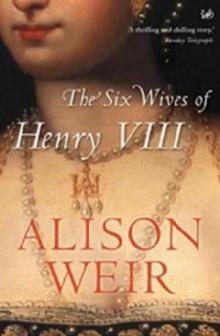 Six Wives of Henry VIII
Six Wives of Henry VIII Elizabeth of York: A Tudor Queen and Her World
Elizabeth of York: A Tudor Queen and Her World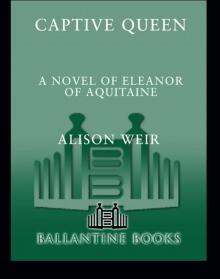 Captive Queen
Captive Queen Innocent Traitor
Innocent Traitor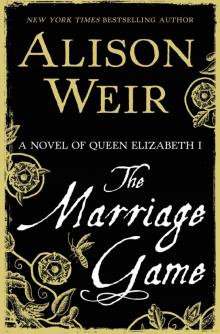 The Marriage Game
The Marriage Game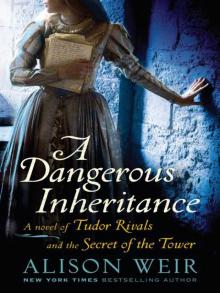 A Dangerous Inheritance
A Dangerous Inheritance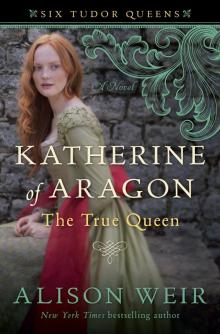 Katherine of Aragón: The True Queen
Katherine of Aragón: The True Queen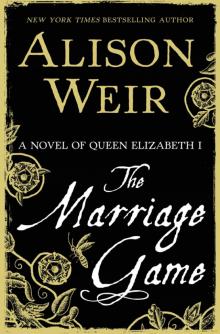 The Marriage Game: A Novel of Queen Elizabeth I
The Marriage Game: A Novel of Queen Elizabeth I Princes in the Tower
Princes in the Tower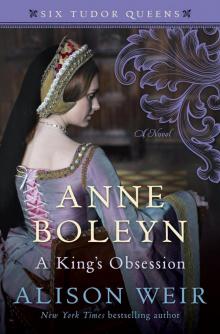 Anne Boleyn: A King's Obsession
Anne Boleyn: A King's Obsession Traitors of the Tower
Traitors of the Tower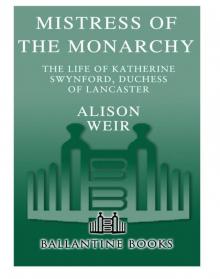 Mistress of the Monarchy: The Life of Katherine Swynford, Duchess of Lancaster
Mistress of the Monarchy: The Life of Katherine Swynford, Duchess of Lancaster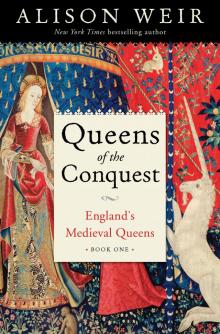 Queens of the Conquest: England’s Medieval Queens
Queens of the Conquest: England’s Medieval Queens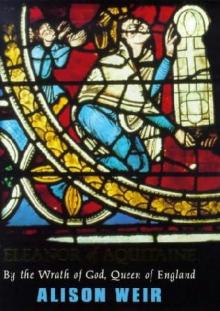 Eleanor of Aquitaine: A Life
Eleanor of Aquitaine: A Life Mary, Queen of Scots, and the Murder of Lord Darnley
Mary, Queen of Scots, and the Murder of Lord Darnley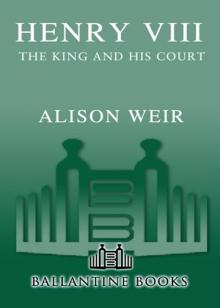 Henry VIII: The King and His Court
Henry VIII: The King and His Court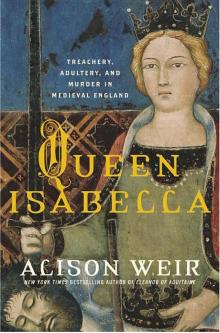 Queen Isabella: Treachery, Adultery, and Murder in Medieval England
Queen Isabella: Treachery, Adultery, and Murder in Medieval England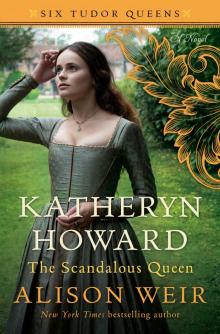 Katheryn Howard, the Scandalous Queen
Katheryn Howard, the Scandalous Queen Arthur- Prince of the Roses
Arthur- Prince of the Roses The Wars of the Roses
The Wars of the Roses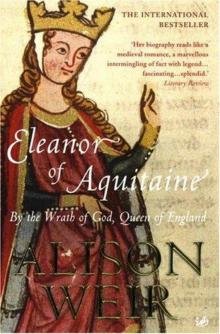 Eleanor of Aquitaine: By the Wrath of God, Queen of England
Eleanor of Aquitaine: By the Wrath of God, Queen of England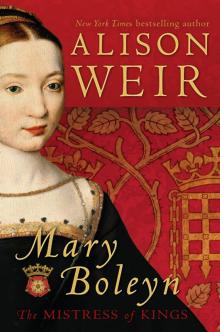 Mary Boleyn: The Great and Infamous Whore
Mary Boleyn: The Great and Infamous Whore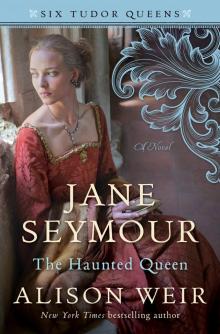 Jane Seymour: The Haunted Queen
Jane Seymour: The Haunted Queen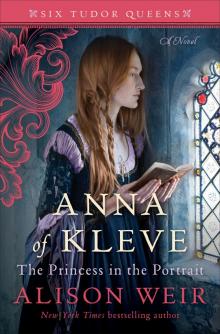 Anna of Kleve, the Princess in the Portrait
Anna of Kleve, the Princess in the Portrait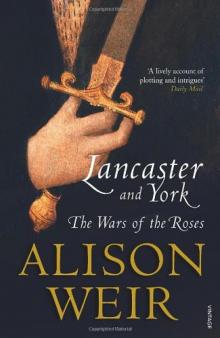 Lancaster and York: The Wars of the Roses
Lancaster and York: The Wars of the Roses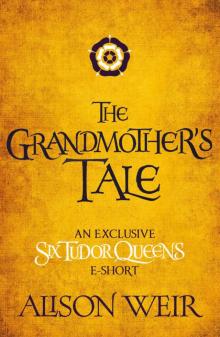 The Grandmother's Tale
The Grandmother's Tale The Princess of Scotland (Six Tudor Queens #5.5)
The Princess of Scotland (Six Tudor Queens #5.5)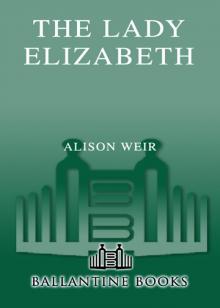 The Lady Elizabeth
The Lady Elizabeth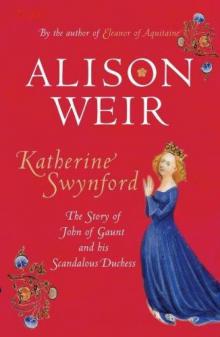 Katherine Swynford: The Story of John of Gaunt and His Scandalous Duchess
Katherine Swynford: The Story of John of Gaunt and His Scandalous Duchess The Curse of the Hungerfords
The Curse of the Hungerfords The Lost Tudor Princess: The Life of Lady Margaret Douglas
The Lost Tudor Princess: The Life of Lady Margaret Douglas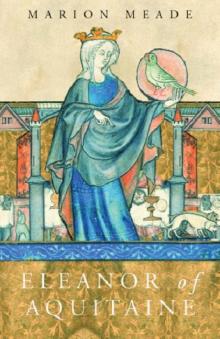 Eleanor of Aquitaine
Eleanor of Aquitaine Mistress of the Monarchy
Mistress of the Monarchy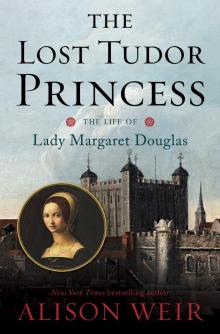 The Lost Tudor Princess
The Lost Tudor Princess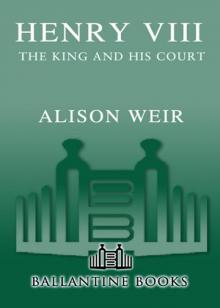 Henry VIII
Henry VIII Anne Boleyn, a King's Obsession
Anne Boleyn, a King's Obsession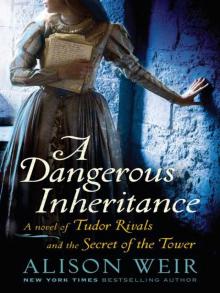 A Dangerous Inheritance: A Novel of Tudor Rivals and the Secret of the Tower
A Dangerous Inheritance: A Novel of Tudor Rivals and the Secret of the Tower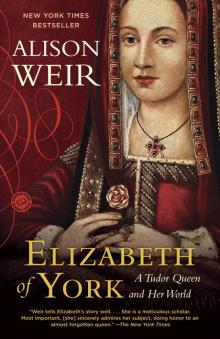 Elizabeth of York
Elizabeth of York Katherine of Aragon, the True Queen
Katherine of Aragon, the True Queen Katherine Swynford
Katherine Swynford Wars of the Roses
Wars of the Roses Queens of the Conquest
Queens of the Conquest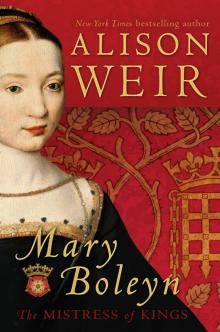 Mary Boleyn
Mary Boleyn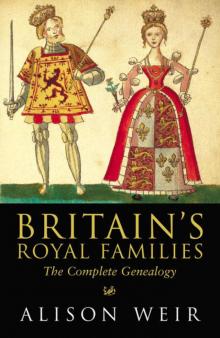 Britain's Royal Families
Britain's Royal Families The Tower Is Full of Ghosts Today
The Tower Is Full of Ghosts Today Life of Elizabeth I
Life of Elizabeth I Anne Boleyn A King's Obssession
Anne Boleyn A King's Obssession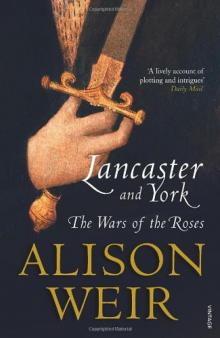 Lancaster and York
Lancaster and York Jane Seymour, the Haunted Queen
Jane Seymour, the Haunted Queen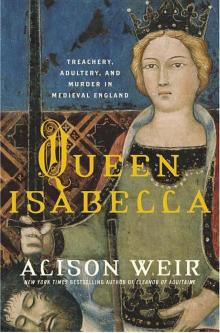 Queen Isabella
Queen Isabella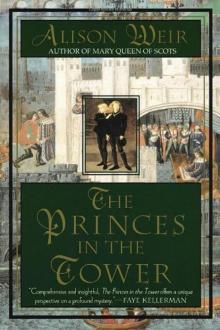 The princes in the tower
The princes in the tower